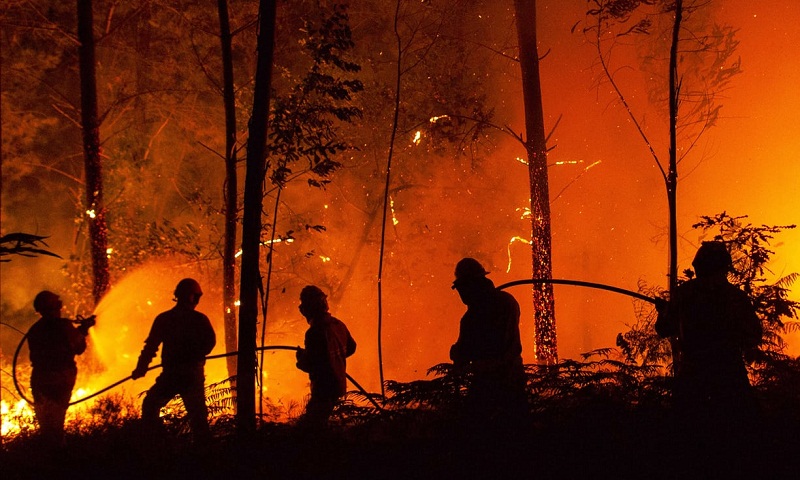Extreme weather deaths in Europe ‘could increase 50-fold by next century’

Deaths from weather disasters could increase 50-fold in Europe by the start of the next century if no action is taken to reduce greenhouse gas emissions or protect citizens, researchers have warned. A new study estimates a toll of 152,000 deaths a year between 2071 and 2100 as a direct result of hazards relating to extreme weather, with those living in southern Europe likely to be the hardest hit. “Governments and policies should be focused more on designing suitable adaptation measures,” said Giovanni Forzieri, a co-author of the study from the European Commission Joint Research Centre in Italy. “If no adaptation measures [are] taken, these estimates are really alarming.” Writing in the journal Lancet Planetary Health, Forzieri and colleagues describe how they used state-of-the art predictions to explore how often and where seven types of weather disasters – including heat waves, wildfires and floods – are likely to occur across Europe in the coming years if no action on global warming is taken. The analysis also used large datasets from disasters in recent years to calculate a fixed value of human vulnerability for different weather events, and incorporated projections on how populations were likely to change. Looking at the impact on Europeans over 30-year intervals, the team found that two in three people in Europe could be affected by weather-related disasters annually by the period 2071-2100 – an estimated 351 million people. By contrast, between 1981 and 2010, 25 million people were exposed – just 5% of Europe’s population. What’s more, the number of deaths is expected to increase 50-fold by 2100, reaching an estimated 152,000 deaths a year – up from 3,000 a year between 1981 and 2010. Those living in southern Europe, including Italy, Spain and the south of France, are predicted to be the hardest hit with about a 64-fold increase in deaths. This rise, say researchers, is largely down to heat waves, with the phenomenon expected to account for 99% of the additional deaths. Overall, more than 90% of the increased risk to Europeans, the authors say, is down to an increase in the frequency and severity of weather events as a result of climate change. The remaining 10% is a result of population growth and migration; for example, increased numbers living in coastal regions likely to flood – a problem particularly in Slovenia, Ireland and Norway. “Population change will play only a marginal role compared to climate change [in increasing risk],” said Forzieri, adding that historically the reverse was true. But, Forzieri notes, the analysis does not take into account indirect effects on public health, warning that problems ranging from cardiovascular disease to mental health disorders could become more prevalent, while pressures on health services and other resources could also take their toll. Weather-related disasters, the authors add, are also likely to disproportionately affect the sick, poor and elderly – a factor they say is a concern given the ageing population across Europe.

